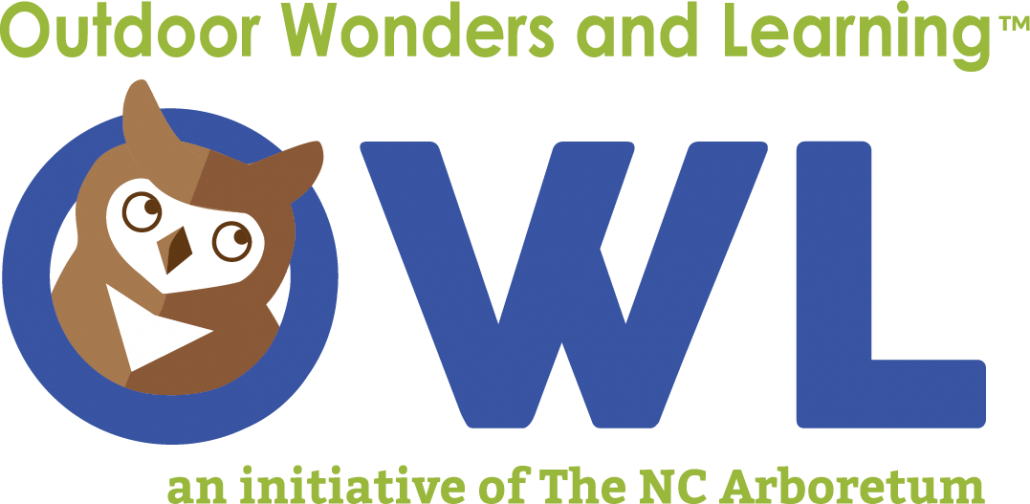Web Designers (Co-written with Julie Travaglini, Allegheny Land Trust)
Elaborate/Apply
Students will explore various types of spider webs and learn how math plays a part in spider web design and effectiveness.
Supplemental Reading
Spinning Spiders: Let’s Read and Find Out Science by Melvin Berger
Spiders by Gail Gibbons
Grade Levels:
Curriculum Correlation:
NCSCS - Science
4.L.12, 4.L.1.4, 5.P.1.1
NCSCS - Mathematics
3.NF.1, 4.G.1
Materials:
Set of Spider Webs and Descriptions Cards (see Teacher Resources)
Paper plates
Writing utensils
Rulers
Protractors (optional)
Class set of 12" embroidery hoops
Selection of strings, yarns, dental floss, threads, twine, etc.
Small (1/2") pom-poms or cotton balls
Duration:
40 minutesLocation:
Indoor Classroom or Outdoor Study Area
Procedure:
1. Turn and Talk: Tell your neighbor about an experience you’ve had with a spider web. After a few minutes, ask the students to share what their partner said about their experience. This open forum will likely lead to sharing the function of a web, so another prompt could be “How could the structure of a spider web affect the way it works?”
2. Put the students in four smaller groups. Provide each group with a Spider Web image and ask them to make observations of what they see: What do you notice, what do you wonder, what does it remind you of? After sharing their answers with each other in their groups, rotate the images and ask the questions again. Add on the question of “How is this one the same or different from the previous one?” Continue the rotations until all the groups have seen all the images.
3. Guess Who? Game: Once students have seen all four of the web designs, they will use their observations to identify each web. The Web Description cards have clues about each of the Web Designs. The clues start with a general description and get more specific as you reach the final clue. For each Web Description, read the first clue and see if the students can guess which Web Design it refers to. Continue reading the clues until they guess correctly. Once they guess, tell them the name of that Web Design.
*Consider making it into a team game where groups score points based on which clue helped them get the correct answer, i.e. Clue #1 equals 3 points, Clue #2 equals 2 points, Clue #3 equals 1 point. Be sure to share the Fun Fact with them about that Web Design!
*It is also important to note that not all spiders build webs. All make silk, and some use that silk in different ways, but the end result is the same: stickiness to catch food.
4. Either in their small groups, or individually, students will now have a chance to design their own webs. For this activity students will mimic an orb web design using different materials and working through the scientific method to see which will catch the most “insects”.
Provide each student with a paper plate, a ruler, and a marker or pencil.
A. Fractions of a whole:
First ask the students to divide the paper plate (circle) in half using the ruler, and mark the line all the way across the circle. Next have the students divide the circle into fourths using the ruler first, then marking the line. *For older students you can have them divide the first two halves into thirds, creating 6 equal parts of the circle. Finally have the student divide the circle into 8 equal parts using the ruler and the marker.
B. Now the students will have to decide how they will design the inner framing of the web. Ask them to reflect back on their observations of the Orb Web. Were the connecting pieces loose or taught? Were they a series of circles or more of a spiral pattern? What do they think will work best to catch an insect?
C. Once the students have completed their web design, they can choose from the materials provided to build their web by using the drawing as a template. Have them record why they made their selection as a hypothesis: I chose [this material] because it is [adjective] and I think it will collect the most insects.
*Note: Here the students can continue using the paper plate, wrapping their string around it to trace over the design. You could also provide embroidery hoops in order for their webs to have open space behind them (like in nature). They can secure the inner framing by wrapping and weaving or by taping the parts that intersect.
D. Time to test! Have the students work in small groups. They will try tossing the pompoms or cotton balls into each other’s webs and seeing which web material and patterns collect the most “insects”. Have them record their results about their webs, and compare their results with the other students in their group. What did you learn about your web design? How was it the same or different from other people in your group? How would you modify your web to be more effective?
E. Group reflection questions: How did the different designs and materials affect the way the webs worked?
5. To reflect on their work, ask the students “What did you learn about how the structure of a spider web affects the way it works?” or “Did any of your ideas change today? What made your ideas change?”
Learning Targets:
- Students will identify and represent different types of unit fractions, lines, perpendicular lines, rays, and angles when designing an Orb Web.
- Students will observe and compare different characteristics of spider webs and how those characteristics help spiders survive in their habitats.


Leave a Reply
Want to join the discussion?Feel free to contribute!